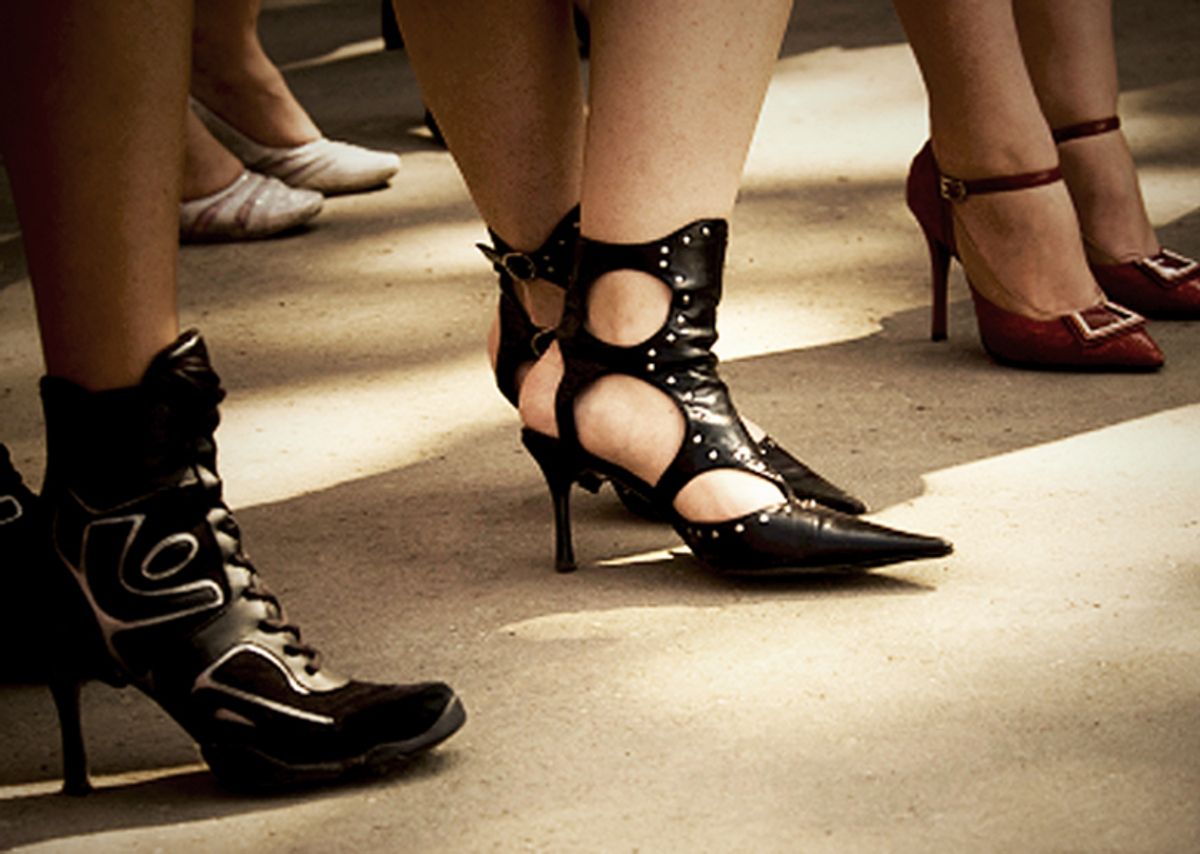A diverse, fresh-faced group, the 20 American girls standing still and expressionless onstage create a striking opening tableau. Between the ages of 13 and 17, they could be anyone’s daughter or sister or cousin -- or any sex trafficker’s prey.
Their voices ring out, one after another, in a litany of the ways in which girls become ensnared in youth sex trafficking.
“I was recruited at my school.”
“I met him at McDonald’s.”
“I was 12.”
“I was 14.”
“And now look at me. I’m for sale. On your street. On your browser.”
It can happen to anyone.
That is one of the points of “A Day in the Life,” a one-act play drawing on the real experiences of ordinary teenage girls whose lives have intersected with the world of commercial sexual exploitation.
“Sex trafficking is a problem all over the world, including the United States,” said Yasmeen Hassan, the global director of Equality Now, the international human rights organization that sponsored the performance in New York. In introducing the play, she said that “98 percent of all sex trafficking victims are women and girls and 300,000 children in the United States are at risk of being sex-trafficked.”
One of the most powerful and touching side events during the United Nations’ recently concluded 58th session of the Commission on the Status of Women, the play was created in collaboration with Equality Now by the Arts Effect All-Girl Theater Company, which works to empower girls between the ages of 8 and 18 through acting training, community events, workshops, public service and plays such as “A Day in the Life.”
The 45-minute play, written by Arts Effect founders Katie Cappiello and Meg McInerney, focuses on the stories of four girls and how their lives were affected by the “pimp and ho” culture and entwined with trafficking.
The first is Nadia, a young high-school student who is excited to go to the annual “Pimps and Hoes” party, a 20-year off-campus ritual conducted by graduating seniors at which girls dress up as prostitutes and boys dress up like their pimps.
She recounts how the girls knelt on the floor waiting to be selected by “pimps.” Nadia, dressed in red plastic shorts and a bustier with a leopard print push-up bra, was thrilled to be picked by a senior. He put a dog collar and leash on her and led her away to have sex.
“When we were done, he went into his pocket and pulled out his wallet. He gave me $20. He said he had $40, but I was only worth $20,” she said, crestfallen.
Eve, a young Asian-American girl, starts out reading an online ad for a call girl offering “teenaged baby-soft skin.”
“I feel sick every minute of the day,” she says. “Buying a person isn’t a mistake.”
The girl, who was 14, and the man who hired her was busted. “She’ll be convicted of prostitution and she’ll go to jail. He had the money to make bail and probably will be charged with a misdemeanor,” says Eve.
She describes sitting with a man at the breakfast table and eating cereal as he cries.
She asks him, “Are you crying because unlike most guys who do this, you got caught, Dad?”
The third girl, Kaitlyn, tells the story of her cousin Gina who met a guy at a party when she was 16. “Then, one day, she was just gone.”
Gina, she says, dropped out of school and moved into an apartment where the guy “shot her full of heroin” and pimped her. Her family basically disowned her.
“She’s been on the streets for four years now,” Kaitlyn says. “I was angry and I turned my back on her. I think she’s going to die out there.”
Then there’s Desiree, a young African-American girl about to celebrate her 16th birthday.
She comes back to her mother’s house for the first time in three years. She ran away from home after her mother’s boyfriend, Dion, raped her and her mother refused to believe her.
On the run, she met a guy who told her she was beautiful but then turned her into a prostitute required to make $300 a night.
“Sometimes 25 guys a night,” she says. “I was 13 and these guys were all 40 and 50.” She smoked crack and took other drugs to get by.
When she tried to leave him, TK beat her, tied her up with duct tape and carved his name into her neck.
Eventually, she was arrested and got clean, but she started cutting herself. Dion finally moved out of her mother’s house and Desiree is moving back home again.
“I was not dumb. I was not stupid. I was not a prostitute. I was just a young girl who got beat and raped,” she says.
One of the strongest messages in these stories is the need to criminalize the buyer of sex, not the girls or women who provide it. Key to preventing sexual exploitation is the education of men at an early age, according to the panel discussion that followed the play.
“I think it’s so important to talk to boys about the fact that buying a woman’s body is not a rite of passage. It’s actually a human rights violation,” said Lauren Hersh, who, as New York director of Equality Now and head of its global trafficking program, developed an anti-trafficking workshop for girls with the Arts Effect.

Shares